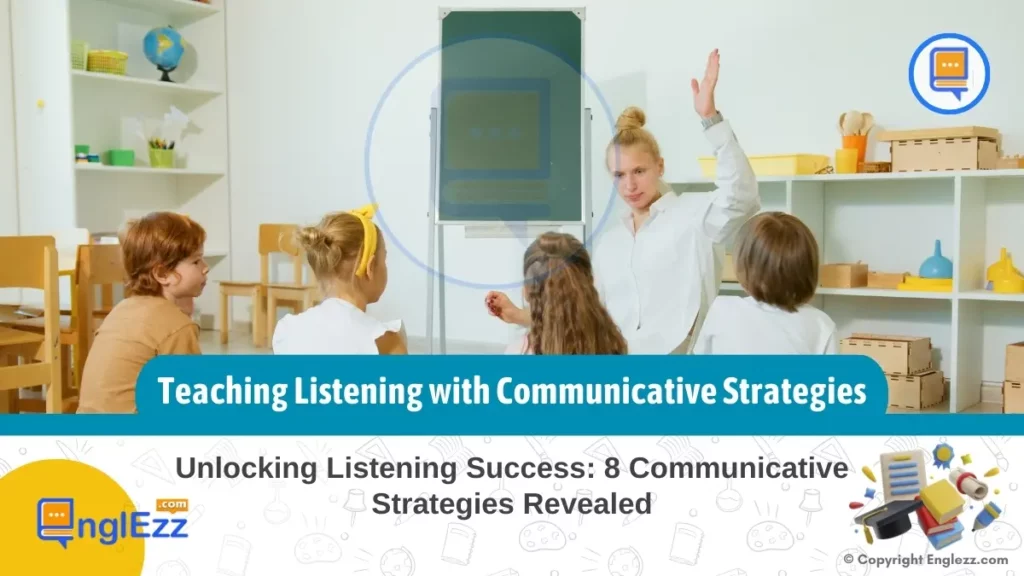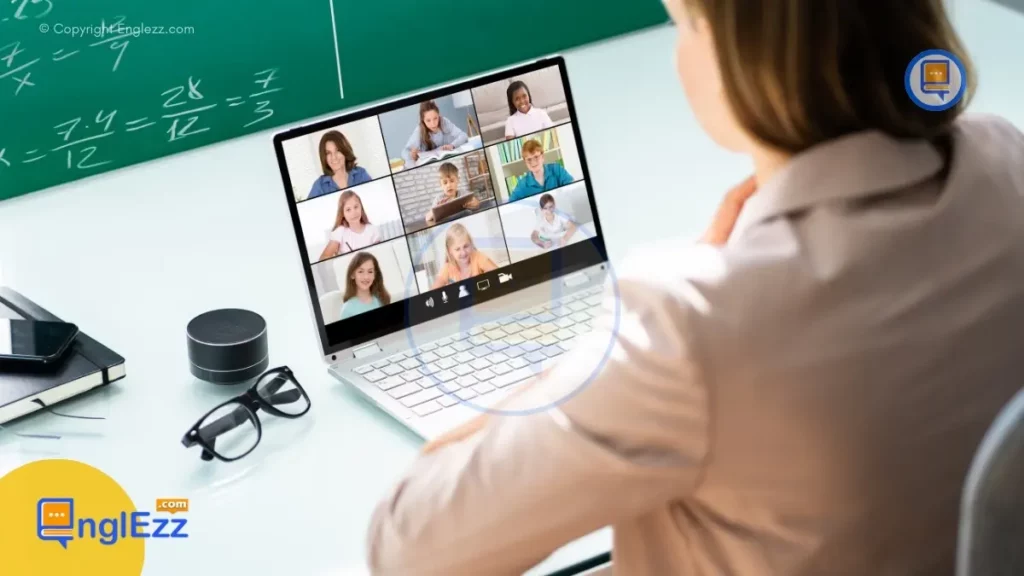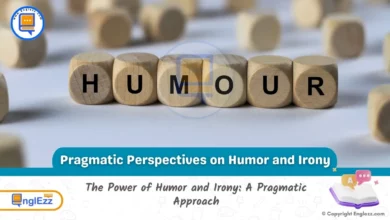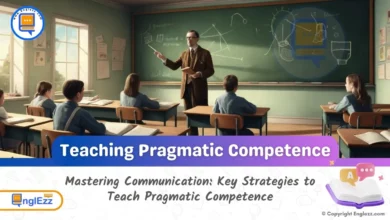In the symphony of education, listening comprehension plays a pivotal role as the harmonic thread that weaves understanding and communication together in the classroom. For educators and ESL teachers, mastering the art of teaching listening skills is not merely a task but a transformative journey toward unlocking profound learning experiences for students. Empower your teaching with advanced communicative strategies for enhancing listening comprehension. Transform learning experiences today!
Amidst this pedagogical landscape, communicative strategies emerge as beacons of guidance, casting light on innovative approaches to nurturing active listeners and fostering meaningful language acquisition.
Table of Contents
- Teaching Listening Comprehension with Communicative Strategies
- Understanding Listening Comprehension
- The Power of Communicative Strategies
- Building Rapport Through Listening
- Incorporating Technology for Enhanced Learning
- Cultural Awareness In Teaching Listening
- Assessment Strategies for Listening Proficiency
- Empowering Educators Through Effective Communication Strategies
- Final Tips on Teaching Listening Comprehension with Communicative Strategies
- Empowering Educators Through Effective Communication Strategies
- FAQs:
- Q: How can I assess my students’ listening proficiency accurately?
- Q: Why is cultural awareness important in teaching listening skills?
- Q: What role does technology play in enhancing listening skills?
- Q: How does building rapport through active listening benefit educators?
- Q: Can using real-life scenarios really improve students’ listening skills?
Teaching Listening Comprehension with Communicative Strategies
As we embark on this enlightening voyage of Teaching Listening Comprehension with Communicative Strategies: Unlocking Listening Success, we delve into a realm where dialogue transcends words and captures the essence of connection through attentive ears. Within educational settings, the significance of honing listening abilities resonates deeply, echoing the fundamental truth that effective communication stems from adept listening skills.

Through the lens of communicative strategies, we illuminate pathways to empower instructors in elevating their teaching practices by infusing intentionality and purpose into every spoken word that reverberates within their classrooms. Join us as we embark on an insightful exploration into how these transformative techniques can revolutionize the educational experience, breathing life into language learning and amplifying the voices of both educators and learners alike.
Understanding Listening Comprehension
Listening comprehension is a multifaceted skill that involves various elements working together to facilitate understanding. To break it down, effective listening comprehension comprises not only hearing the words spoken but also grasping the speaker’s intended message. Active listening plays a pivotal role in this process as it involves fully engaging with the speaker, processing information thoughtfully, and providing feedback to ensure accurate understanding. For instance, in a classroom setting, active listening can entail paraphrasing what a student has shared to confirm comprehension and encourage further dialogue.
Moreover, context and non-verbal cues are critical components that aid in interpreting spoken language accurately. Consider a scenario where a speaker uses sarcasm or humor – without understanding the contextual cues or detecting the speaker’s tone through non-verbal signals like facial expressions or body language, the listener may misinterpret the message. Therefore, teaching students to pay attention not only to words but also to context and subtle cues enhances their overall listening comprehension skills. By fostering an awareness of these nuances, educators empower learners to navigate conversations effectively and avoid misunderstandings in diverse communication settings.
In essence, mastering listening comprehension goes beyond passive reception of sound; it requires active engagement with both verbal and non-verbal signals to extract meaning from communication effectively. By emphasizing active listening techniques and highlighting the significance of contextual clues and non-verbal communication, educators can equip students with valuable skills for real-world interactions. This comprehensive approach sets the foundation for successful communication where individuals can not only hear but truly understand each other’s perspectives, fostering meaningful connections and building stronger relationships both inside and outside the classroom.
The Power of Communicative Strategies
In the realm of teaching listening comprehension, communicative strategies serve as powerful tools to enhance students’ ability to understand and interpret spoken language effectively. By exploring various communicative strategies, educators can create dynamic learning experiences that prioritize active engagement with real-life scenarios. For instance, incorporating role-playing exercises where students engage in authentic conversations helps bridge the gap between theoretical classroom learning and practical application. These real-life scenarios not only make the learning process more relatable but also challenge students to actively listen, process information, and respond appropriately – key components of comprehensive listening skills development.
Highlighting the benefits of using real-life scenarios in teaching is paramount in improving listening skills. When learners are exposed to authentic speech patterns, nuances of intonation, and contextual cues in a simulated real-world setting, they develop a deeper understanding of spoken language. Additionally, integrating interactive activities such as group discussions or multimedia presentations can further engage learners and foster better retention of information. By creating an environment where students are actively participating in dialogue exchanges or collaborating on tasks that require attentive listening, educators can nurture essential communication skills while enhancing overall comprehension abilities.
Interactive activities play a crucial role in facilitating effective listening comprehension by encouraging active participation and reinforcing learning through multi-sensory experiences. For instance, language instructors can incorporate storytelling sessions where students listen attentively to narratives and then discuss their interpretations collaboratively. Such interactive activities not only promote critical thinking and analytical skills but also encourage learners to make connections between verbal content and their own perspectives or experiences.
By infusing creativity into teaching methods through interactive approaches, educators empower students to become more proficient listeners who can engage meaningfully with diverse forms of oral communication.
Building Rapport Through Listening
Establishing meaningful connections with students through active listening is at the core of building rapport in educational settings. When educators genuinely listen to their students, they convey respect, care, and understanding. By paying attention to students’ verbal and non-verbal cues, teachers can create a conducive environment where learners feel valued and supported. For instance, acknowledging a student’s body language or tone of voice during a conversation shows that you are attuned to their emotional state, fostering trust and open communication.
To enhance listening effectiveness during classroom sessions, educators can implement strategies such as maintaining eye contact, nodding to show understanding, and paraphrasing to confirm comprehension. These practices not only demonstrate active engagement but also encourage students to express themselves confidently. Additionally, incorporating group discussions or pair activities allows for more dynamic interactions among students, further promoting active listening and mutual respect within the learning environment.
Empathy plays a pivotal role in fostering meaningful listening exchanges between educators and students. When teachers empathize with their learners’ perspectives and experiences, they create a supportive atmosphere that encourages dialogue and collaboration. By demonstrating empathy through active listening, instructors validate students’ feelings and opinions, leading to deeper connections and enhanced learning outcomes. For example, when discussing sensitive topics or personal experiences in class, showing empathy through attentive listening helps build trust and cultivates a sense of belonging among students.
In essence, building rapport through effective listening is not just about hearing words but understanding emotions, intentions, and underlying meanings conveyed by students. By prioritizing active listening techniques coupled with empathy-driven interactions, educators can establish strong relationships with learners that foster mutual respect, trust, and meaningful exchanges both inside and outside the classroom. This approach not only enhances the quality of teaching but also promotes a positive learning environment where every student feels valued and heard.
Incorporating Technology for Enhanced Learning
Technology has revolutionized the way educators approach teaching listening comprehension, offering a wealth of innovative tools to enhance students’ learning experiences. By embracing multimedia resources in the language classroom, instructors can create dynamic and engaging lessons that cater to diverse learning styles. For instance, utilizing platforms like TED Talks or podcasts not only exposes students to authentic speech patterns but also cultivates their interest in real-world topics. These audiovisual aids not only improve listening skills but also spark discussions and critical thinking among learners.

Furthermore, interactive online platforms such as language learning apps or websites with listening activities provide personalized practice opportunities for students outside the traditional classroom setting. This blended approach complements face-to-face instruction by allowing individuals to hone their listening skills at their own pace. In this way, technology acts as a supportive tool that reinforces the lessons taught in class while adapting to each student’s specific needs and abilities.
One significant advantage of incorporating audiovisual aids in teaching listening comprehension is the ability to cater to visual and auditory learners simultaneously. Videos, virtual reality simulations, or animations can bring complex concepts to life, making abstract ideas more tangible and easier for students to grasp. Additionally, digital tools offer instant feedback on pronunciation, intonation, and comprehension, allowing educators to pinpoint areas for improvement quickly. By leveraging these technological resources effectively, teachers can create an immersive learning environment that nurtures active engagement and lasting retention of key language skills.
Cultural Awareness In Teaching Listening
Cultural awareness plays a pivotal role in teaching listening skills to ESL learners, as it fosters an environment of inclusivity and respect for diverse perspectives. When instructors recognize and embrace cultural differences, they create a more conducive space for effective communication and comprehension. For example, understanding how certain cultures may view silence differently can help educators adapt their teaching methods to accommodate varying norms. By acknowledging these nuances, instructors can tailor listening activities that resonate with students from different cultural backgrounds, promoting a deeper understanding of the language.
Cultural differences can significantly impact interpretation during communication, even in listening exercises. For instance, idiomatic expressions or cultural references may be lost on learners who are not familiar with the native context. By incorporating multicultural content and providing explanations for culturally specific phrases, instructors can bridge these gaps in understanding and enrich the learning experience. This approach not only enhances listening comprehension but also encourages students to appreciate the linguistic diversity present in real-world conversations.
To promote cross-cultural understanding through listening activities, educators can incorporate storytelling sessions or real-life narratives that reflect diverse perspectives. By exposing students to various voices, accents, and cultural references, instructors broaden their learners’ intercultural competency while honing their listening skills. Encouraging discussions on different cultural practices or social norms further deepens students’ appreciation for the multilayered aspects of language and communication. Ultimately, by integrating cultural sensitivity into listening instruction, educators empower ESL learners to navigate linguistic barriers with empathy and curiosity in an increasingly interconnected world.
Assessment Strategies for Listening Proficiency
Assessing students’ listening proficiency is crucial in understanding their progress and refining teaching methods. Formative assessments play a pivotal role by offering insights into students’ comprehension abilities over time. For instance, educators can implement regular listening tasks such as dictations or response exercises to track students’ improvement and identify areas needing reinforcement. Feedback from these formative assessments guides instructors in tailoring instructional strategies to address individual learning needs effectively.
In addition to formative assessments, incorporating summative evaluation techniques provides a holistic view of students’ overall listening skill development. Summative assessments, like comprehensive listening tests or presentations, allow educators to assess how well learners have grasped essential concepts and applied them in various contexts. By analyzing the results of such evaluations, teachers can adjust instructional approaches, adapt materials, and scaffold learning experiences to enhance students’ listening proficiency comprehensively.

Furthermore, incorporating self-assessment tools empowers students to reflect on their listening skills independently. By engaging learners in evaluating their own understanding through reflections or self-assessment surveys, educators promote metacognitive awareness and self-regulated learning practices. Encouraging students to set personal listening goals and monitor their progress not only fosters autonomy but also strengthens their motivation to improve actively. Ultimately, a combination of formative assessments, summative evaluations, and self-assessment mechanisms ensures a comprehensive approach to assessing and enhancing students’ listening comprehension skills effectively.
Empowering Educators Through Effective Communication Strategies
As educators strive to enhance students’ listening comprehension skills, the implementation of communicative strategies proves to be a powerful tool in their arsenal. By embracing innovative teaching methods and integrating interactive activities that foster active participation, educators can create a dynamic learning environment that nurtures effective communication. Understanding the nuances of effective listening, from decoding verbal cues to recognizing non-verbal signals, allows educators to tailor their instructional approaches to meet diverse learning needs.
Empowerment lies at the heart of utilizing communicative strategies in teaching listening comprehension. When educators harness the power of real-life scenarios and multimedia resources, they not only enrich the educational experience but also equip students with practical language skills for real-world application. By nurturing cultural sensitivity and promoting cross-cultural understanding through listening activities, educators play a pivotal role in preparing students to navigate global communication landscapes with empathy and respect.
In closing, the adoption of communicative strategies transforms traditional teaching paradigms into engaging and impactful learning experiences. As educators prioritize building rapport through active listening and fostering an inclusive classroom environment where every voice is heard, they pave the way for meaningful communication exchanges that transcend linguistic barriers. By empowering educators with effective communication strategies, we are not only unlocking listening success but also cultivating a community of lifelong learners who embrace diversity and embody the transformative power of education.
Final Tips on Teaching Listening Comprehension with Communicative Strategies
To enhance listening comprehension in students, consider incorporating diverse audio materials that reflect real-world conversations. By exposing learners to various accents, speech rates, and tones, they can improve their ability to understand different communication styles. Additionally, encourage active note-taking during listening exercises to help students retain information effectively. Providing scaffolding techniques like visual aids or outlines can assist students in organizing their thoughts while listening and facilitate better understanding.
Another tip is to create interactive and engaging activities that promote student collaboration and critical thinking. For example, group discussions where students have to summarize a dialogue collectively can foster active participation and deeper comprehension. Utilizing role-playing scenarios based on everyday situations can also make the learning process more enjoyable while honing listening skills. By incorporating gamification elements into listening exercises, educators can motivate students to actively engage with the material and track their progress effectively.
Lastly, emphasize the importance of regular feedback and reflection on listening tasks. Encourage students to self-assess their listening skills by identifying areas for improvement and setting specific goals for enhancement. Providing constructive feedback based on clear criteria helps students understand their strengths and areas needing development. Moreover, integrating reflective exercises where students evaluate their listening strategies after completing a task can enhance their metacognitive awareness and overall listening proficiency over time.
Empowering Educators Through Effective Communication Strategies
In conclusion, the art of teaching listening comprehension with communicative strategies is a transformative journey that holds the key to unlocking listening success in educational settings. By breaking down the components of effective listening comprehension and exploring various communicative strategies, educators can pave the way for enhanced learning experiences. The use of real-life scenarios, interactive activities, technology integration, and cultural awareness not only elevates listening skills but also fosters cross-cultural understanding and empathy among students.
As we wrap up our exploration into teaching listening comprehension, remember that active listening is not just about hearing words; it’s about understanding context, decoding non-verbal cues, and building meaningful connections through effective communication. By employing these communicative strategies revealed in this article, educators can create dynamic learning environments where listening flourishes as a fundamental skill. Let us continue to empower ourselves and our students through the power of effective communication strategies.
FAQs:
Q: How can I assess my students’ listening proficiency accurately?
A: You can assess listening proficiency through a combination of formative assessments that track progress over time and summative evaluations that measure overall skill development effectively.
Q: Why is cultural awareness important in teaching listening skills?
A: Cultural sensitivity plays a critical role in interpreting nuances during communication exchanges. Understanding different cultural contexts enhances listening comprehension and promotes cross-cultural understanding.
Q: What role does technology play in enhancing listening skills?
A: Technology offers innovative tools and multimedia resources that supplement traditional teaching methods for a comprehensive learning experience. Audiovisual aids can engage learners and improve retention of information.
Q: How does building rapport through active listening benefit educators?
A: Active listening helps educators connect with students on a deeper level, fostering trust, engagement, and a conducive environment for effective communication during classroom sessions.
Q: Can using real-life scenarios really improve students’ listening skills?
A: Yes, incorporating real-life scenarios in teaching enhances practical application of language skills, engages learners actively, and facilitates better retention of information in diverse contexts.









Master the art of teaching listening comprehension with proven communicative strategies. Enhance learning outcomes today!